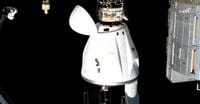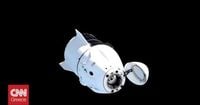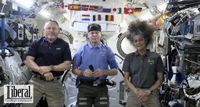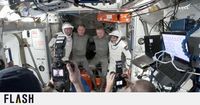On March 18, 2025, NASA astronauts Butch Wilmore and Suni Williams began their long-awaited return to Earth after spending nearly nine months aboard the International Space Station (ISS). Their return follows a series of unexpected delays caused by technical issues with the Boeing Starliner spacecraft, which was supposed to facilitate their week-long mission but instead led to this extended sojourn among the stars.
The two astronauts, along with NASA's Nick Hague and Russian cosmonaut Alexander Gorbunov, boarded the SpaceX Dragon spacecraft at 7:05 AM Greek time. Their capsule is expected to land near the coast of Florida around midnight local time on March 18, marking the end of what began as a standard mission and turned tumultuous.
Wilmore and Williams initially arrived at the ISS on June 6, 2024, aiming primarily to evaluate the Starliner’s docking and operational capabilities. With their return anticipated just ten days later, they instead found themselves trapped due to significant failures within the Starliner system, including issues with turbine malfunctioning and helium leaks. Despite these setbacks, the duo adapted to their circumstances, stating, "We are trained to wait for the unexpected," during their earlier communications from space.
Nine months later, their prolonged space adventure has captured international attention and drawn considerable political speculation. The incident evolved beyond just exploration; it triggered debates around NASA’s mission protocols and inter-agency partnerships. Elon Musk weighed in, asserting the government’s role in the delays. Meanwhile, former President Donald Trump aimed to cast the situation as not merely routine but rather as a rescue operation mandated by the White House.
Upon their departure from the ISS, Nick Hague expressed the crew’s shared sense of accomplishment and relief, proclaiming, "Crew-9 is officially Earth bound. It has been our privilege to call the ISS our home as part of this international endeavor for the benefit of humanity." This sentiment resonates with the spirit of collaboration among nations participating in space exploration.
The physical act of returning home from space is no simple feat. The SpaceX Dragon will experience fiery re-entry, facing temperatures soaring to 1,600 degrees Celsius. The astronauts will undergo considerable g-forces, about four times the force of Earth's gravity, as they plunge back through the atmosphere before deploying four large parachutes to soften their landing on the ocean.
Helen Sharman, the first British astronaut, who returned home from space after her trip aboard the Soyuz capsule, shared insights on the psychological aspects of returning. "The clean air is the first thing you notice," she stated, highlighting how returning to Earth feels like the most immediate relief after spending extended periods away from it.
The duration of their stay on the ISS has raised concerns about the physical and psychological impacts of such lengthy confinement on the human body. Experts have discussed the potential consequences of microgravity on health and well-being, particularly for astronauts accustomed to Earth's gravity and atmosphere.
Throughout this period, the two astronauts displayed resilience, camaraderie, and determination. Their teamwork aboard the ISS assisted with various experiments and demonstrations, making them invaluable contributors to space research during their unintended extended mission.
After the successful undocking at 1:05 AM ET on March 18, the astronauts found themselves once again on the brink of returning home, hoping to reconnect with family and friends. Their return symbolizes not only personal triumph but also highlights the need for careful evaluation and oversight of spacecraft technology as space missions become increasingly common.
NASA’s decision to involve SpaceX for the return mission was not incidental. It signals the agency's commitment to ensuring shuttle availability even when its own projects face setbacks. The Starliner’s issues have been well-documented, prompting scrutiny over Boeing’s role and capabilities within NASA’s broader strategic plan.
While the challenges of the Starliner mission will likely inform future NASA projects, the safe return of Wilmore and Williams serves as alert to both the opportunities and risks inherent to extended space missions. With the arrival of new methods and technologies, the future of interstellar travel will likely evolve, but these astronauts' experiences serve as important reminders of the fragility of human endeavors beyond Earth.
Finally, as their capsule splashes down off the coast of Florida, the 17-hour voyage heralds the end of their unforeseen odyssey. Wilmore and Williams, through their perseverance and adaptability, managed to turn what could have been a harrowing ordeal—a task of surviving and returning from space—into an adventure of resilience, cooperation, and hope. With newfound insights from this mission, their example inspires future generations of astronauts reaching for the stars.




